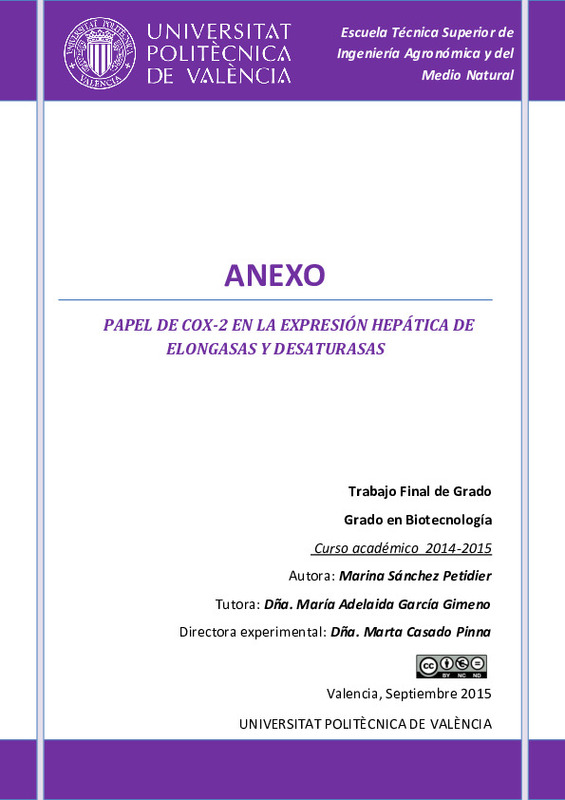JavaScript is disabled for your browser. Some features of this site may not work without it.
Buscar en RiuNet
Listar
Mi cuenta
Estadísticas
Ayuda RiuNet
Admin. UPV
Papel de COX-2 en la expresión hepática de elongasas y desaturasas
Mostrar el registro completo del ítem
Sánchez Petidier, M. (2015). Papel de COX-2 en la expresión hepática de elongasas y desaturasas. http://hdl.handle.net/10251/56364.
Por favor, use este identificador para citar o enlazar este ítem: http://hdl.handle.net/10251/56364
Ficheros en el ítem
Metadatos del ítem
| Título: | Papel de COX-2 en la expresión hepática de elongasas y desaturasas | |||
| Autor: | Sánchez Petidier, Marina | |||
| Director(es): | Casado Pinna, Marta | |||
| Entidad UPV: |
|
|||
| Fecha acto/lectura: |
|
|||
| Resumen: |
[EN] Cyclooxygenases (COX-1 and COX-2) are the enzymes that catalyze the rate-limiting step in the synthesis of prostanoids. Prostaglandins play an important role in many biological processes such as platelet aggregation, ...[+]
[ES] Las ciclooxigenasas (COX-1 y COX-2) son los enzimas que catalizan el paso limitante en la síntesis de prostanoides. Las prostaglandinas juegan un papel importante en numerosos procesos biológicos como la agregación ...[+]
|
|||
| Palabras clave: |
|
|||
| Derechos de uso: | Reconocimiento - No comercial - Sin obra derivada (by-nc-nd) | |||
| Editorial: |
|
|||
| Titulación: |
|
|||
| Tipo: |
|
recommendations
Este ítem aparece en la(s) siguiente(s) colección(ones)
-
ETSIAMN - Trabajos académicos [3541]
Escuela Técnica Superior de Ingeniería Agronómica y del Medio Natural








